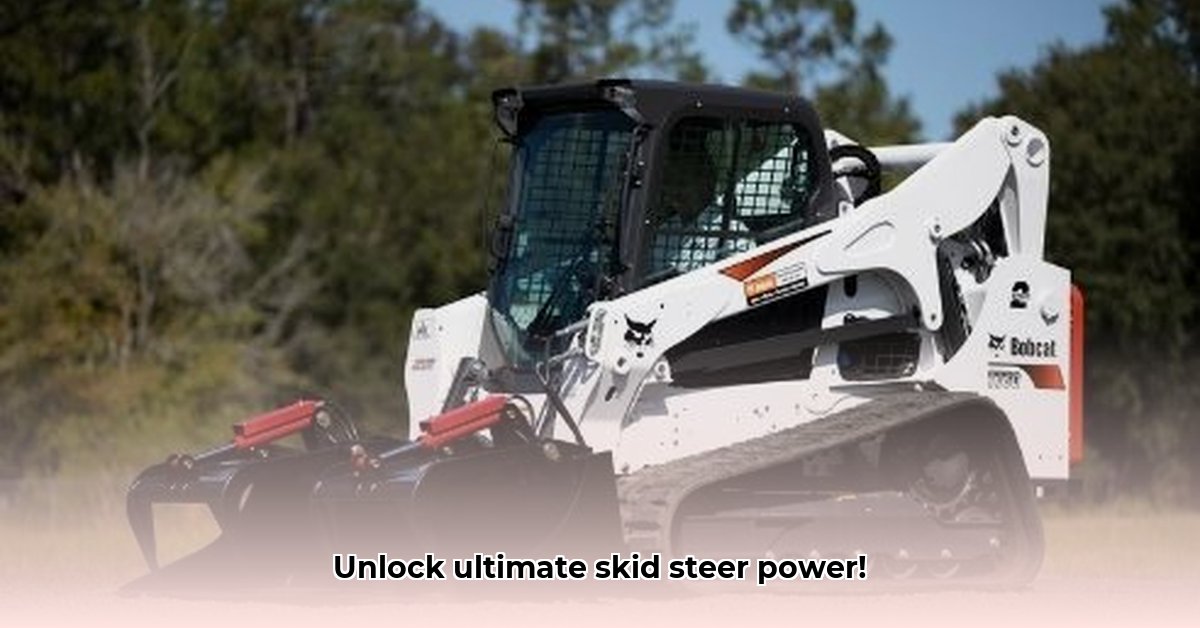
Tractors are powerful workhorses, but their capabilities expand exponentially with the right attachments. This guide helps you choose the best skid steer attachments for your tractor, maximizing efficiency and minimizing costs. We'll explore various attachment types, evaluate quality, and highlight safe operating practices. For more information on quick-attach systems, check out this helpful resource: Quick Attach Systems.
Understanding Skid Steer Tractor Attachments
Skid steer attachments are tools that connect to your tractor's quick-attach system, transforming it for diverse tasks. Popular choices include:
Buckets: Ideal for digging, scooping, and moving materials like dirt, gravel, or snow. Sizes and designs vary based on application.
Pallet Forks: Efficiently move heavy pallets in various settings, from farms to warehouses.
Augers: Designed for digging holes of varying depths and diameters, perfect for planting or setting posts.
Brush Cutters/Mowers: Maintain landscaping by cutting through brush and tall grass quickly.
Grapples: Handle bulky, irregularly shaped materials like logs or scrap metal, reducing manual labor.
Compatibility is key. Before buying, check your tractor's specifications (hydraulic flow rate, mounting system) and the attachment manufacturer's instructions to ensure a safe fit. Mismatched attachments can lead to damage or injury.
Evaluating Attachment Quality and Durability
Investing in high-quality attachments prevents costly repairs and downtime. Key factors to consider include:
Materials: High-strength steel is essential for durability. Look for robust construction, strong welds, and reinforced stress points.
Construction and Build Quality: Examine the welds, the fit of moving parts, and the overall robustness. Poorly constructed attachments may bend or break under stress.
Warranty: A comprehensive warranty indicates manufacturer confidence. Compare warranty terms across brands; a longer warranty often suggests higher quality.
Maintenance: Easy maintenance means less downtime and lower costs. Simple designs with readily accessible parts are advantageous.
Doesn't a long-lasting, dependable attachment sound better than frequent repairs? Investing wisely upfront saves money in the long run.
Choosing the Right Attachment for Your Needs
Selecting the right attachment depends on your specific needs. Consider:
Task: What are you doing? (Digging, moving pallets, cutting brush?) This dictates the attachment type.
Materials: What are you handling? (Lightweight soil, heavy rocks?) Material weight and type influence attachment size and strength.
Budget: Set a realistic budget, balancing initial cost with long-term durability and maintenance.
The following table compares common attachment types:
| Attachment Type | Primary Use | Material Handling Capacity | Durability | Estimated Cost Range |
|---|---|---|---|---|
| Bucket | Digging, Material Handling | Varies greatly | High | $500 - $3000+ |
| Pallet Forks | Pallet Handling | Varies greatly | Medium | $500 - $2000+ |
| Auger | Hole Drilling | Limited | Medium | $300 - $1500+ |
| Brush Cutter | Brush and Grass Cutting | Varies | Medium | $800 - $4000+ |
| Grapple | Handling Irregular Loads | Varies greatly | High | $1000 - $5000+ |
Note: Cost ranges are approximate and may vary based on manufacturer, size, and features.
Safe Operation and Maintenance: Prioritizing Safety
Safe operation and regular maintenance are crucial for longevity and safety:
Proper Installation: Follow manufacturer instructions precisely. Improper installation is a major safety hazard.
Operator Training: Understand the attachment's operation, controls, and limitations before use. Seek professional training if needed.
Regular Maintenance: Inspect for wear and tear, lubricate moving parts, and address any issues promptly. Regular maintenance minimizes risks and extends the life of your attachments.
Safe Practices: Avoid overloading, maintain situational awareness, and operate within safe speed limits.
Resources and Further Reading
Manufacturer websites, online forums (such as those dedicated to tractors and construction equipment), and professional equipment reviews offer valuable additional insights and information. Always consult multiple sources to make informed decisions. Prioritize safety and invest wisely for long-term efficiency.